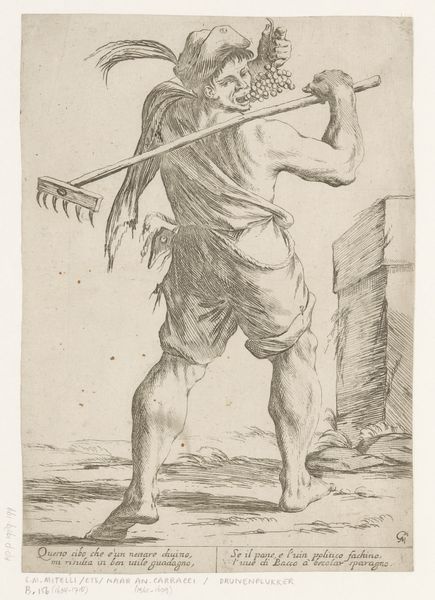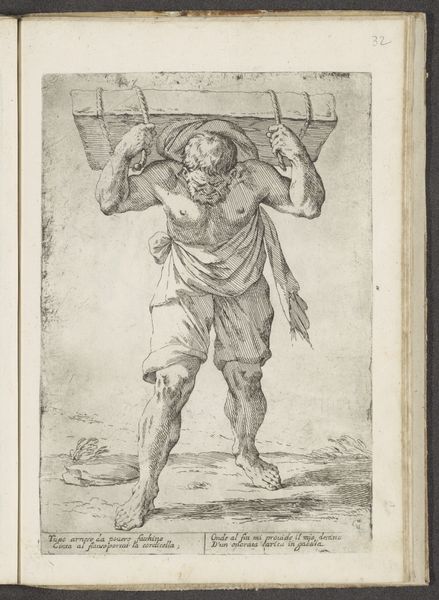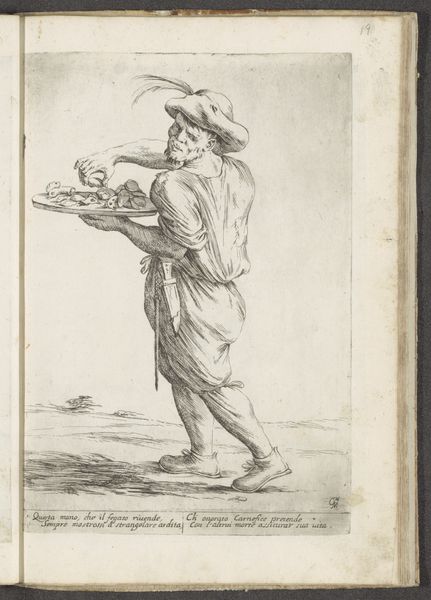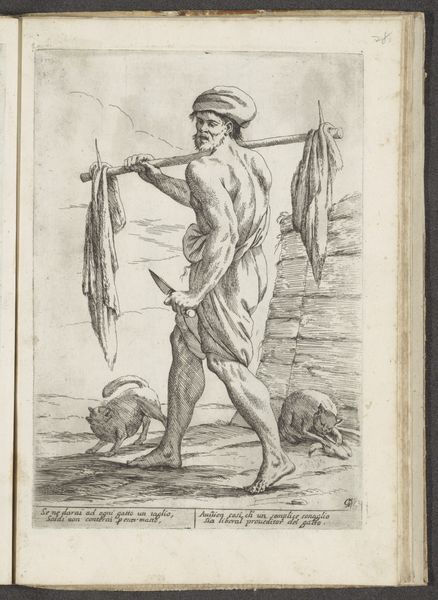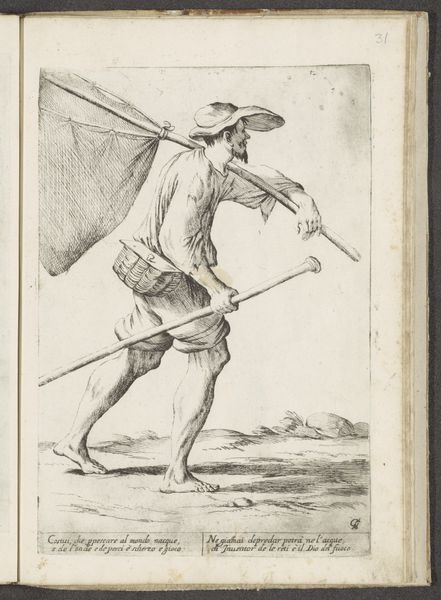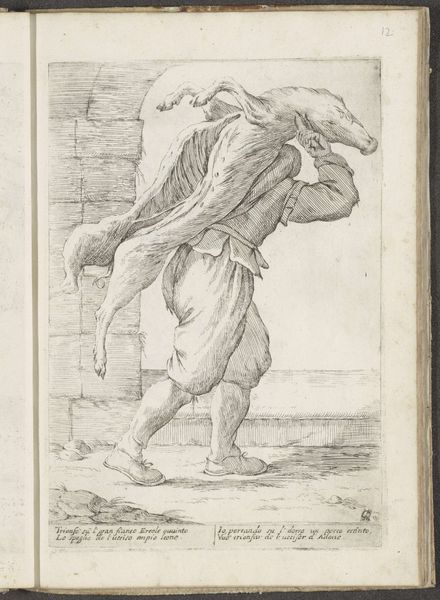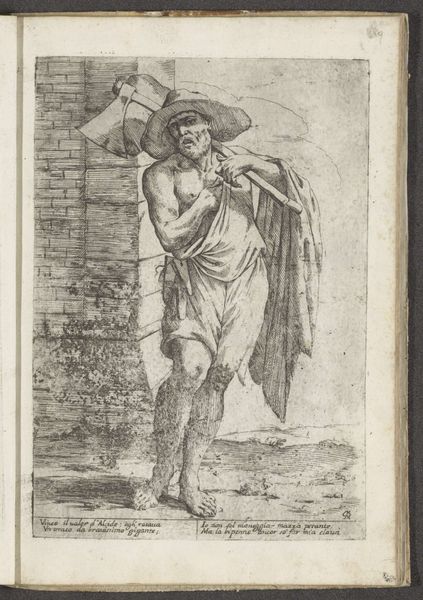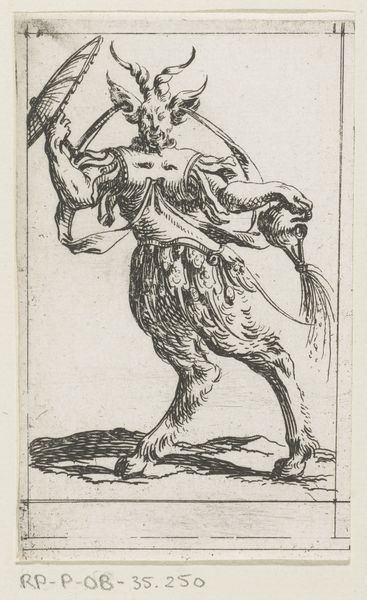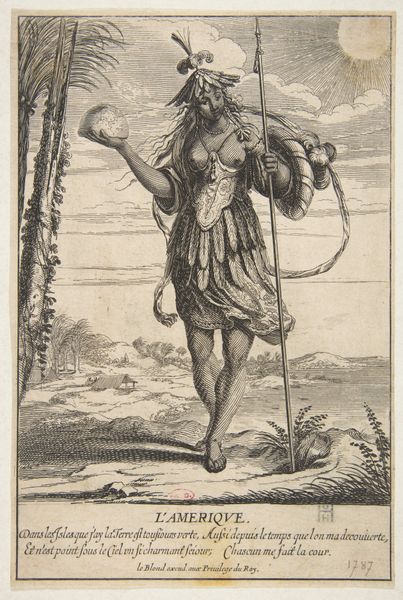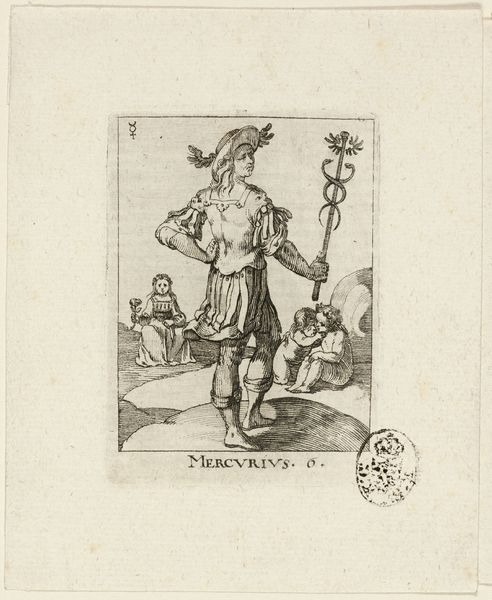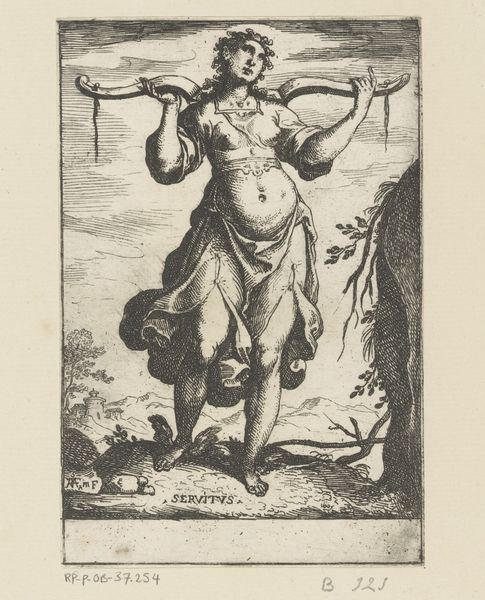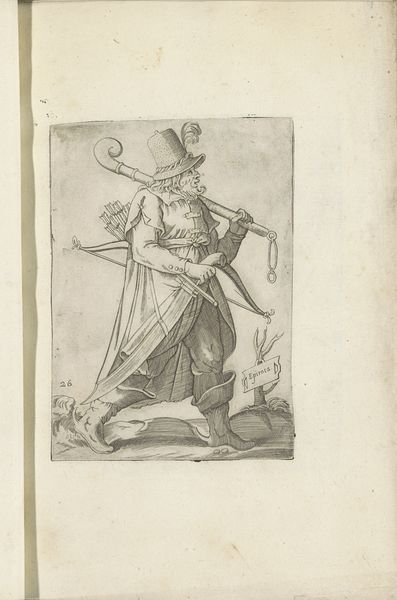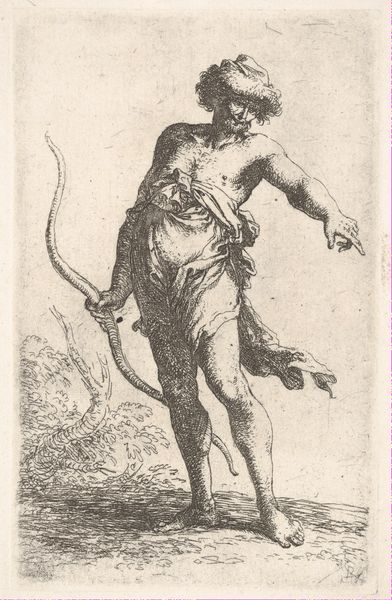
drawing, print, etching
#
drawing
#
baroque
# print
#
etching
#
figuration
#
line
#
genre-painting
Dimensions: height 279 mm, width 191 mm
Copyright: Rijks Museum: Open Domain
Curator: Let's turn our attention to "Druivenplukker," an etching made around 1660 by Giuseppe Maria Mitelli, held here at the Rijksmuseum. Editor: The first thing that strikes me is the almost caricatured expression on the grape picker's face; a mix of exhaustion and what looks like defiance. And those heavily muscled legs and disproportionately sized feet also suggest a distorted sense of class and labour. Curator: Mitelli was working within a tradition of Bolognese art that embraced both classicism and caricature. Etchings like this often circulated as prints and tapped into the everyday lives of ordinary people, offering social commentary through humour. Editor: Exactly, but it goes beyond simple humor. The tension between the physical labour depicted and the seemingly gleeful expression creates an interesting and even disturbing image, raising questions about the agency, dignity and material comfort of the worker. Are we supposed to be laughing at his labor, or with him? Curator: That's precisely the kind of critical lens Mitelli's prints invite. Looking at the text beneath the image can gives us some clues; in translation the artist states: "That food which is considered divine becomes cheap earnings," Editor: Which reinforces my argument about class. The grape itself becomes a symbolic representation of unequal systems. Despite its divine status the grapes result in a miserable earnings for this worker. We must acknowledge the reality of exploited labour which has so often been made invisible to feed systems of global capital. Curator: That is to say that Mitelli’s "Druivenplukker" offers a window into the complex social and economic structures of 17th-century Italy and the social history around the wine industry. It prompts us to think critically about labor, class, and representation. Editor: Indeed, it invites us to engage with both the historical context and the still very relevant questions of power and exploitation represented by his practice. What seems like an isolated illustration in fact reveals very deep issues, in the artworld as much as in daily work. Curator: Very well put, it makes one realize that a print such as this can invite conversation that brings light to a multitude of institutional forces at play throughout time.
Comments
No comments
Be the first to comment and join the conversation on the ultimate creative platform.
